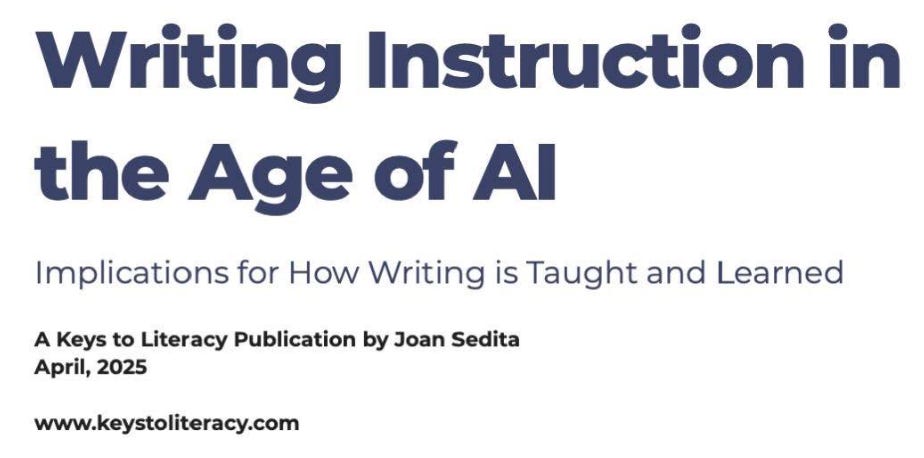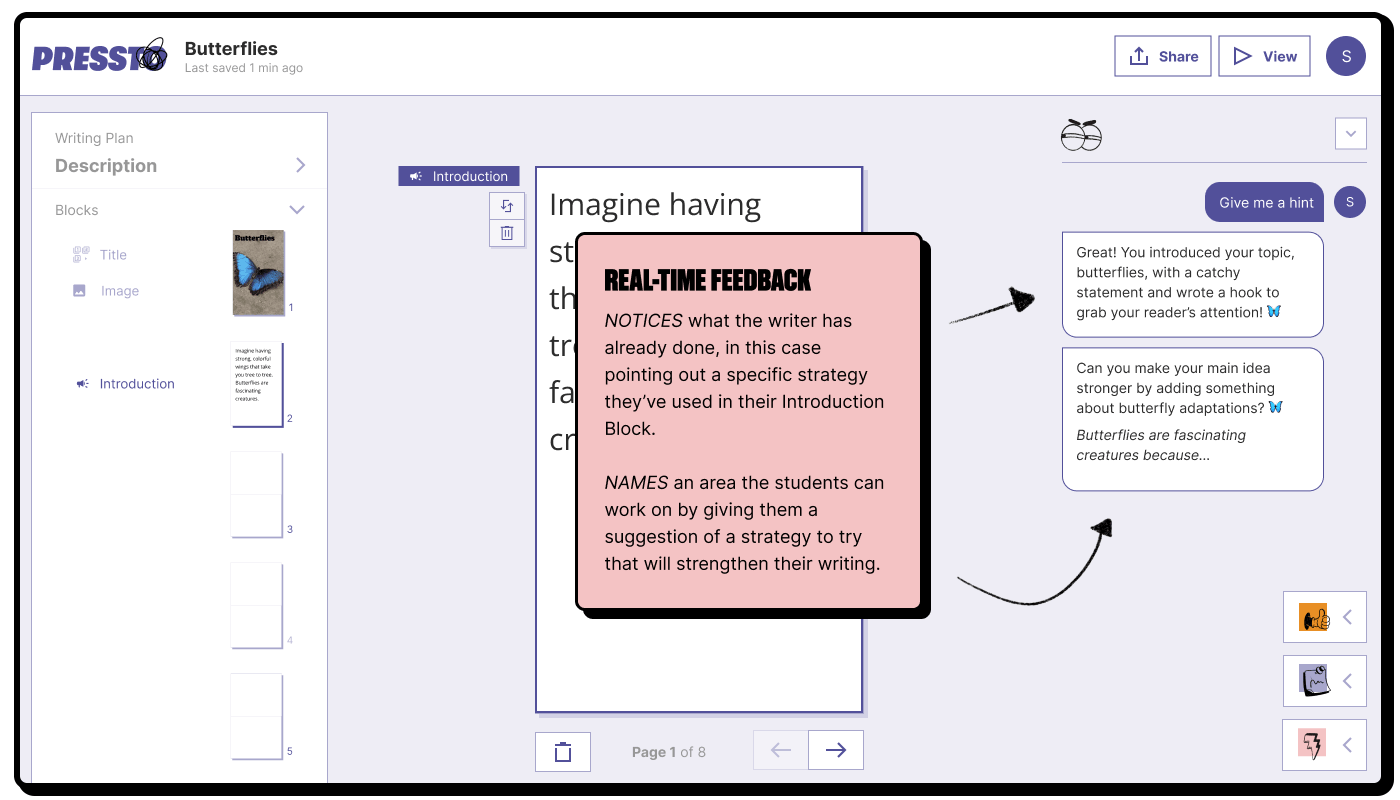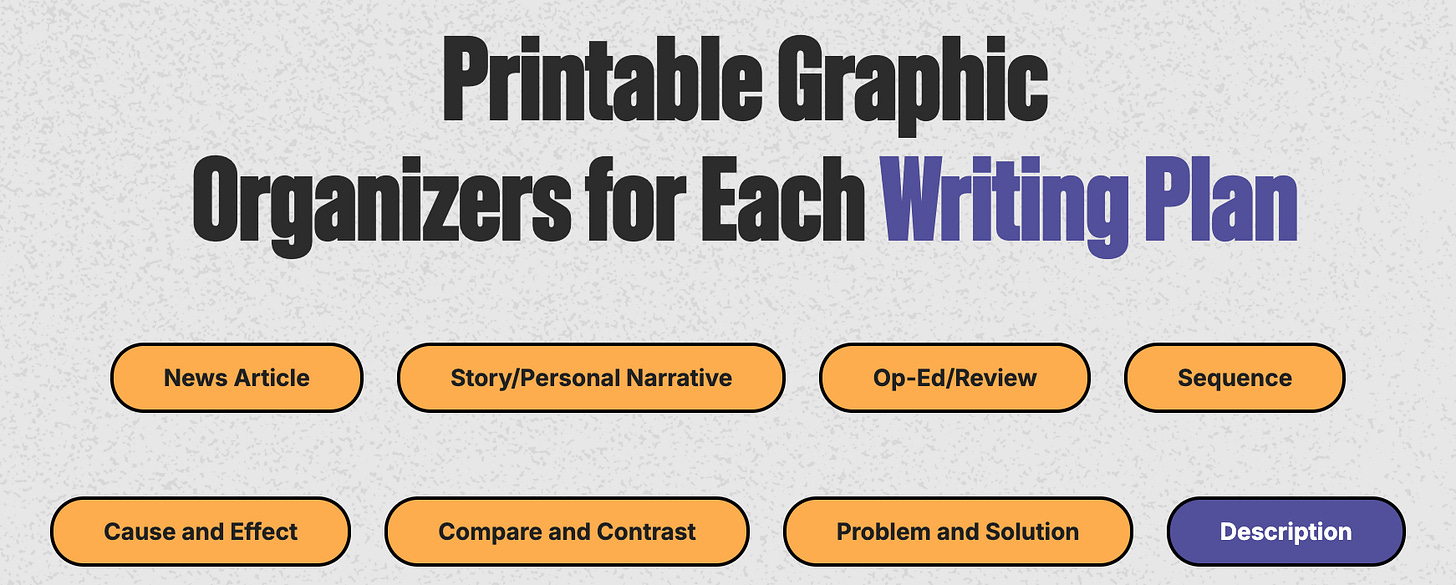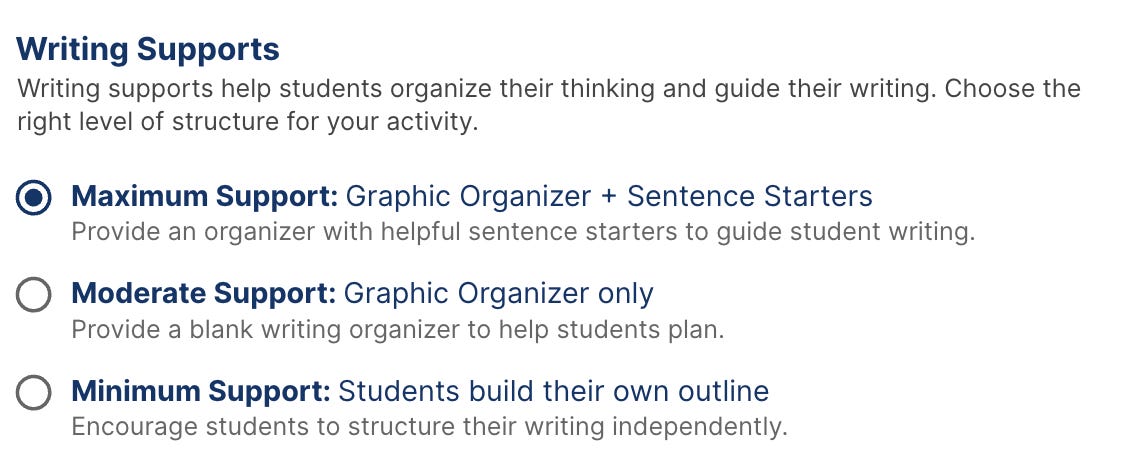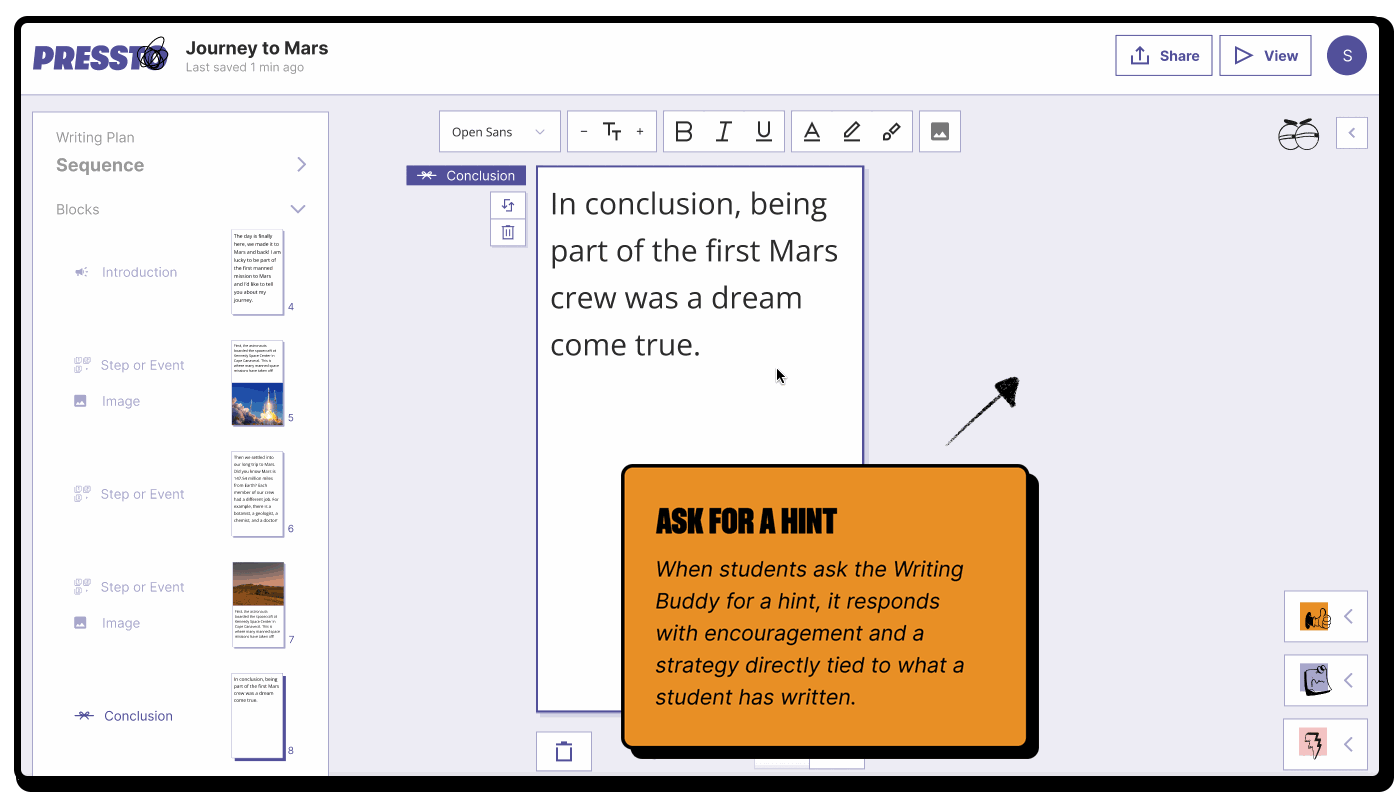Writing Instruction in the Age of AI: Joan Sedita Gets It Right
Joan Sedita’s vision is reshaping how we teach build instructional tools for teachers, and educators everywhere should take note.
We’re always looking for other voices and opinions that share our vision of the future of writing instruction, particularly those grounded in research and attuned to the realities of today’s classroom. Joan Sedita’s April 2025 article, Writing Instruction in the Age of AI, delivers both. For our team, it feels like Sedita has given voice to everything we believe about writing instruction, particularly in an AI-powered world.
If you’ve followed our work, you know we’ve said again and again that writing is thinking. Sedita’s article not only echoes that truth – it expands on it, offering practical insight into what writing instruction should look like in a world where AI is here to stay.
AI as a Teaching Partner – Not a Replacement
“The availability of AI does not eliminate the need for students to learn how to write, nor does it replace the importance of explicit writing instruction.” - Joan Sedita
One of Sedita’s central points is that generative AI doesn’t remove the need for good teaching – it reinforces it. Yes, ChatGPT can produce essays. But that doesn’t mean students no longer need to learn how to write. If anything, explicit writing instruction is more essential than ever.
At Pressto, we’ve always believed that AI should act like a writing coach – not a ghostwriter. Our tools are designed to support students and free up teachers’ time, but the cognitive labor of writing still belongs to the student. Like Sedita, we believe AI should “supplement, not replace” best practice. That’s why Pressto doesn’t just correct grammar or rewrite essays – it prompts, supports, and empowers students to revise their own work.
Writing Is a Thinking Process – Not Just a Product
“Writing is not merely a final product – it is a process and a powerful tool for critical thinking.” - Joan Sedita
This may be Sedita’s most important reminder: writing is thinking. When students write, they’re not just preparing something to turn in. They’re organizing ideas, making meaning, and deepening understanding.
At The Science of Writing, we aim to help educators to operationalize this belief every day with daily quick writes, reflection prompts, and student journaling features. These aren’t about producing polished paragraphs – they’re about building the habit of thinking through writing. Like Sedita, we insist that students should always write their own first drafts. AI can help refine them later, but never before the student has done the heavy lifting of thought.
The Writing Rope Still Holds
“Although AI tools can support the use of these skills and strategies, they cannot replace the need for students to learn how to independently integrate and apply them.” - Joan Sedita
Sedita's Writing Rope model – which outlines five key strands of skilled writing: critical thinking, syntax, text structure, writing craft, and transcription – remains just as relevant today [2]. AI might help with spelling or transitions, but it can’t weave the rope for students.
Pressto is built to address all five strands:
Critical thinking: Our prompts encourage deep thought, analysis, and argumentation.
Syntax and transcription: Our feedback highlights sentence construction and mechanics, while keeping students in control.
Text structure: We guide students with flexible templates and outlines that teach structure without being formulaic.
Writing craft: Most importantly, we help students preserve their voice. Our AI doesn’t overwrite – it offers suggestions. The student makes the call.
Bringing Sedita’s Vision to Life: Pressto in Action
Sedita doesn’t just theorize – she offers practical, research-aligned suggestions for how to integrate AI into the writing classroom. Here’s how Pressto helps to bring these to life:
Structured, Daily Writing Practice
Sedita emphasizes frequent opportunities to write. Pressto allows teachers to assign quick writes and journals that build fluency, reflection, and confidence.
Scaffolds and “Training Wheels”
Sedita calls for explicit guidance throughout the writing process. Pressto’s “clickable text blocks” and sentence starters help students structure their ideas – then fade away as students gain independence.
Brainstorming Support
AI can help students generate ideas without judgment. Our Assignment Assistant does just that. It offers age-appropriate, interest-aligned prompts to get students started.
AI-Powered Revision, Not Rewriting
Sedita champions AI as a revision coach. Pressto’s feedback system offers suggestions, and students stay in control of every change.
Join Us in Reimagining Writing Instruction
Here at The Science of Writing & Pressto, we believe that Sedita’s article speaks well to the future. Her article affirms what we’ve known all along: when students write, they think. And when they own the writing process, even with AI nearby, they grow as learners, thinkers, and communicators.
We invite you to try Pressto, share your experience, and help shape what writing instruction looks like in the age of AI.
References
Sedita, J. (2025, April). Writing Instruction in the Age of AI. Keys to Literacy.
Sedita, J. (2019). The Writing Rope: A Framework for Explicit Writing Instruction in All Subjects. Keys to Literacy.
Hayes, J. R. (1996). A new framework for understanding cognition and affect in writing. In C. M. Levy & S. Ransdell (Eds.), The science of writing.
Hayes, J. R. (2004). What triggers revision?
Graham, S., MacArthur, C. A., & Fitzgerald, J. (Eds.). (2012). Best Practices in Writing Instruction.




